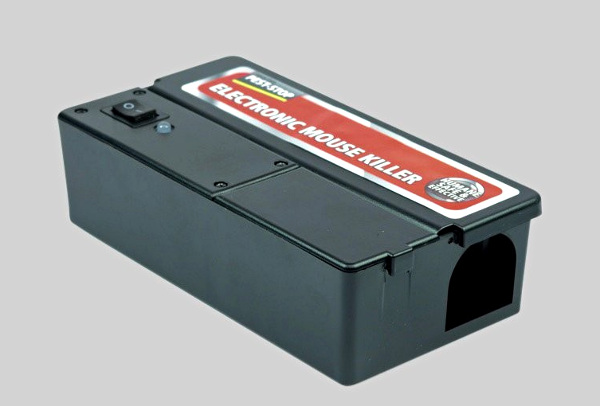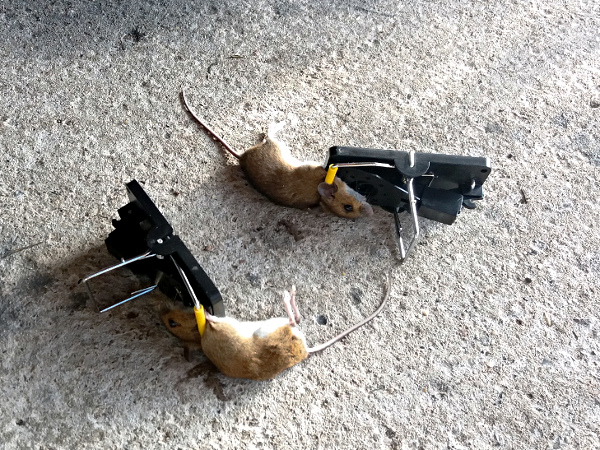A couple of months ago I was disappointed to find that a flapjack that I’d left in a frame pack on my bike in the garage had been part-eaten. I was pretty sure it was untouched when I left it there, and I don’t tend to bite through the wrapper when I eat them myself – so the only reasonable explanation seemed to be that it had been “mouse-masticated”, if I may employ a turn of phrase made popular by The Rutles. Or “rodently-chewed”, if you prefer.
I invested in one of these:
I loaded it with four AA batteries, baited it with a small piece of the same flapjack product, left it on the garage floor and switched it on. Sure enough when I returned to it the next day, the LED light was flashing to indicate that it had claimed a victim. The tail sticking out of the little door was a bit of a giveaway as well, to be fair.
I carefully disposed of the electrocuted rodent (a field mouse, I believe) and naively assumed I’d solved the rodent problem in my garage until earlier this month, when I found a pile of what looked like green plastic shavings on a shelf in there. I later realised that an attempt had been made to gain access to a bottle of Lucozade Sport on the same shelf, by nibbling the plastic cap.
I deployed the electronic trap again but also laid out two conventional traps on the floor, all baited with the same irresistible flapjack material. The next morning I was slightly alarmed to find that all three traps had done their deadly business. I had a trio of dead mice to dispose of.
Clearly the electronic trap works very well, but as you can see from the following photograph, which depicts the scene on my garage floor exactly as I found it – the rather less sophisticated mechanical traps seem to be just as quick and effective.
I do recommend these. They’re very sensitive and seem to dispatch their victims quite quickly – and the right-angled sprung bar means that you don’t have to touch the dead mice when you bin them. The bait goes into a sort of recessed cup that forces the mouse to activate a trigger flap surrounding it when they try to get it.
I was encouraged to see that both traps had whacked the mice right across the back of the neck. It must have been pretty quick. Assuming they’re consistently as effective as this I can’t see the point of buying an electronic one, really.
I’ve re-armed the traps and left them ready to do their lethal work for a few days now, but they haven’t done so. It looks like I got them all.
When I lived in a flat in London in the ’90s I had to deal with a mouse problem, and I bought a humane, non-lethal trap. I entered my kitchen late one evening to find that it had been “sprung” – its little door had snapped shut, which I assumed meant that I’d caught a mouse. I drove the trap to a wooded area a few miles away but when I came to release my little visitor, I found that the trap was empty. At one time I never would have used a lethal trap but now it just seems to me to be the easiest solution for everyone concerned, probably including the mice.


